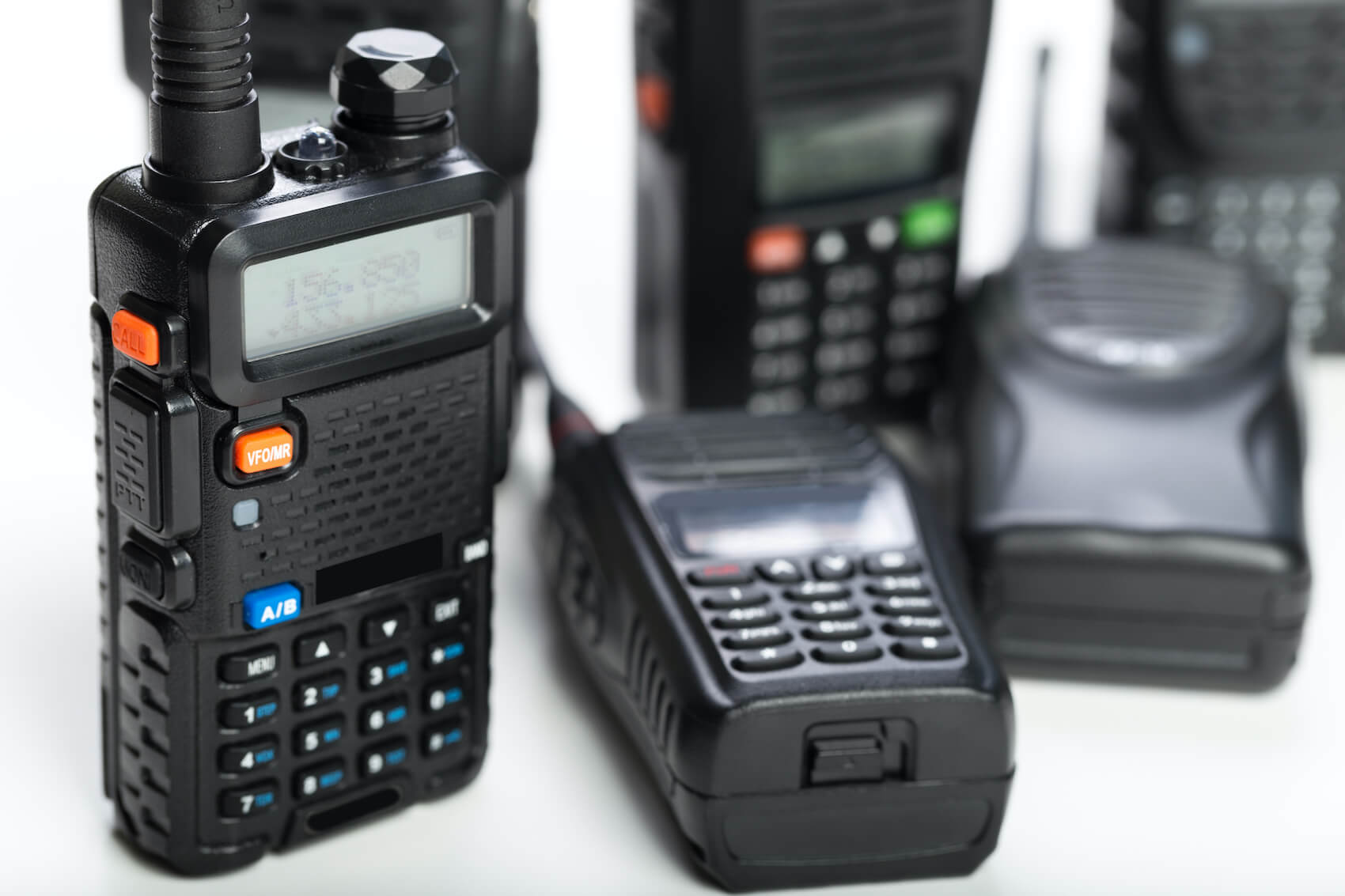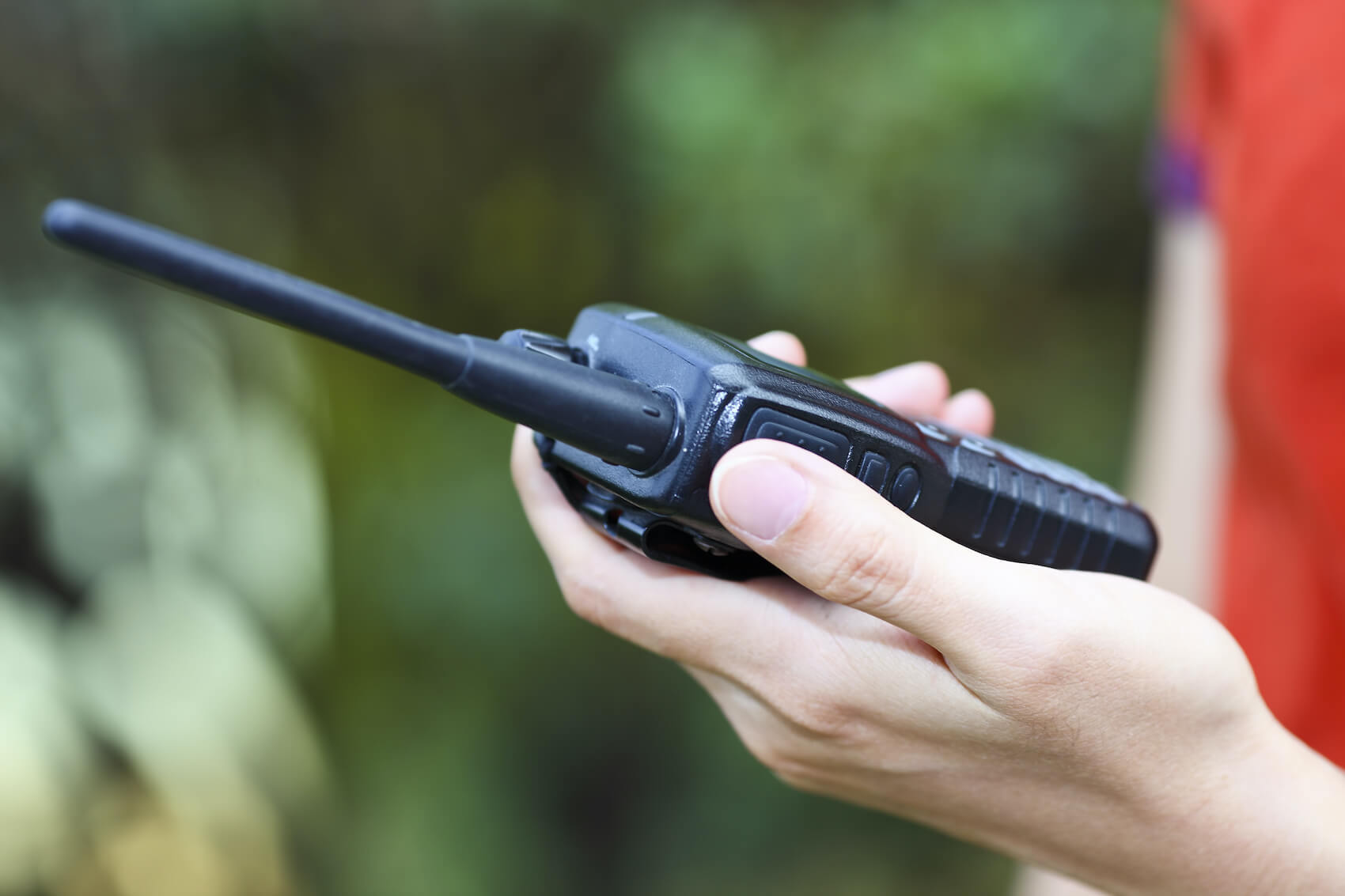
In the era of televisions, internet, and cell phones, two-way radios are often overlooked as the technological marvel they are. With one touch, a person can wirelessly and instantly communicate—in many cases, without relying on added infrastructure. Other communication methods are instant, too, but if a cell tower goes down, or the power goes out, calling, texting, and emailing are out of the question.
The history of the two-way radio is one filled with innovation, involving efforts that spanned continents, and at Radio Communications of Virginia, we’re here to tell you all about it! We proudly serve those in the Richmond, Tidewater, and Southside, VA, areas.
Learn More About Our Two-Way Radio Services
The First Two-Way Radios
Two-way radios are those that can both send and receive messages. They contain an audio transceiver, a transmitter, and a receiver all in one device. Before the advent of the two-way radio, radios could either send or receive messages, but not both.
As early as 1912, military and commercial ships were installing transmitters and receivers to allow for instant two-way communications across the Atlantic Ocean. Up until the 1920s, however, instant back-and-forth communication required two separate devices.
The invention of the two-way radio changed communications dramatically. When people could communicate back and forth in real time using one device, they could respond to emergencies more quickly and run businesses more efficiently.
Making Them Mobile
 The first devices to combine message sending and reception into one device were helpful, but they had one major drawback: they were stationary, locked in place wherever they were installed.
The first devices to combine message sending and reception into one device were helpful, but they had one major drawback: they were stationary, locked in place wherever they were installed.
The first big innovation with two-way radios was making them mobile. In 1923, Senior Constable Frederick William Downie of the Victoria Police in Australia did just that. The mobile two-way radio took up the entire back seat of a squad car, which posed some challenges in the event that any of the officers had to actually arrest someone.
However, the benefits outweighed the disadvantages. Even with the back-seat-sized mobile two-way radio, the system was still significantly more efficient for communications. Before Downie’s innovation, the only way for officers and other public safety personnel to get in touch with each other was via public call boxes. If an officer was far from a call box, they had to hope they could find one quickly.
Mobile two-way radios for police as we know them today got their start in 1933 in New Jersey. The Bayonne Police Department operated a two-way radio system that had a fixed location for dispatchers to communicate via transceivers in patrol cars. With a smaller real-time communication system, public safety personnel could respond to emergencies more quickly.
Putting the “Walkie” in “Walkie-Talkie”
After making mobile radios suitable for vehicles, the next big innovation was making them wearable, like a backpack.
Two different engineers pioneered their own versions of wearable two-way radios. In 1937, Canadian engineer Donald Hings developed the “packset,” which also utilized a wearable backpack transceiver.
Another precursor to walkie-talkies were the Polish military backpack radios that infantries would carry to keep in touch with squad commanders in the late 1930s. The inventor of these portable radios was engineer Henryk Magnuski, who would later move to the United States to further develop radio devices with Motorola in the 1940s.
The first true walkie-talkie—a name coined by journalists sharing this exciting new device with the public—was manufactured by Motorola for use by the Allied forces in World War II. The handheld device that modern consumers would recognize as a walkie-talkie was the SCR-536, which Magnuski also worked on.
The SCR-536 was truly a marvel, even by modern standards. For one, it was waterproof. It weighed only five pounds with its batteries in place. It operated on AM between the 3.5 and 6.0 MHz frequency range. Instead of an on-off button, users powered the device by pulling out the antenna and shut it down by pushing its antenna back down. It held enough charge to last a whole day.
In the post-war period, portable handheld radios became part of mainstream life in the United States when Motorola Corporation began producing them on a large scale. It’s fitting, too—the name Motorola means “sound in motion.”
Modern-Day Applications
The two-way radio has come a long way since its first car-sized iteration. Today, they’re available as powerful handheld devices that can rely on analog technology, tap into cellular networks, and use GPS tracking.
Now, two-way radios are more powerful and capable than ever before, and like always, there are new advancements in the works.
Public Safety
 Portable two-way radios are useful in all kinds of situations, but one of the industries that relies on them the most is public safety. This has been true since 1923 when the Victoria Police Department developed their innovative—albeit a little too large—portable radio into their fleet of squad cars.
Portable two-way radios are useful in all kinds of situations, but one of the industries that relies on them the most is public safety. This has been true since 1923 when the Victoria Police Department developed their innovative—albeit a little too large—portable radio into their fleet of squad cars.
Almost 100 years later, the instant one-touch-talk functionality and reliability of two-way radios is still the best way to coordinate public safety efforts and respond to emergencies.
Today’s two-way radios operate using radio frequencies, but for more range and capacity, they can also tap into cellular networks. Other advancements include GPS tracking, integrated apps, and even cameras.
Event Hosting
At a sold-out football game, event staff can’t necessarily rely on cell phones for a connection, since the influx of cell users can overwhelm the local cell tower. Two-way radios for employees of stadiums, convention centers, and other densely populated places make it possible to keep security personnel, maintenance crews, guest services, and more all up to date on situations as they arise.
Healthcare
Pagers revolutionized the healthcare industry, so much so that although the general public has moved on to smartphones, hospital staff still rely on pagers for fast updates in emergencies. These mini transceivers send and receive only what is absolutely necessary and have long battery lives, perfect for an industry that relies on streamlining processes to save lives.
Manufacturing and Construction
The first walkie-talkie was waterproof, and since that time, handhelds have only gotten more rugged. When you’re working in manufacturing and construction, you can rely on drop-proof, dust-proof, explosion-proof handhelds to keep teams in touch, even in challenging environments.
Other Applications
Of course, two-way radios don’t always come in the form of a wearable device. Another common application for two-way radios is callboxes. As a security feature for a gated area, it can be used to talk and remotely unlock doors.
Two-Way Radios for Sale
Radio Communications of Virginia has been providing two-way radio solutions since 1954, so we know better than anyone how much almost any business can benefit from using two-way radios.
We specialize in Motorola-branded radios, which are still some of the best on the market. Types of two-way radios we provide include:
- Handheld portables
- Base stations
- Repeaters
- In-vehicle two-way radios
- Motorola-branded parts and accessories
Two-Way Radio Service
When it’s time for you to update or repair your fleet, trust our seasoned experts. We have an in-house service center that offers repairs, maintenance, and service for all your Motorola radios.
Our state-of-the-art diagnostic equipment can identify the cause of any issues you might have, and our access to official Motorola parts means that all our repairs are done to manufacturer specifications.
Other services we offer include in-vehicle radio installation for police cars, construction vehicles, delivery trucks, and even watercraft. Installing a two-way radio into a car has proved useful since 1923—let us help you increase your efficiency, too.
Learn More from Radio Communications of Virginia!
Whether you want to learn more about the history of two-way radios or learn more about the modern two-way radios that can help your business thrive, Radio Communications of Virginia is here to help.
As two-way radio technology continues to evolve, you need a two-way radio dealer who has seen these evolutions firsthand. Since 1954, we’ve been experts in the Richmond, Tidewater, and Southside, VA, areas in all things radios and all things Motorola. Contact us today!
